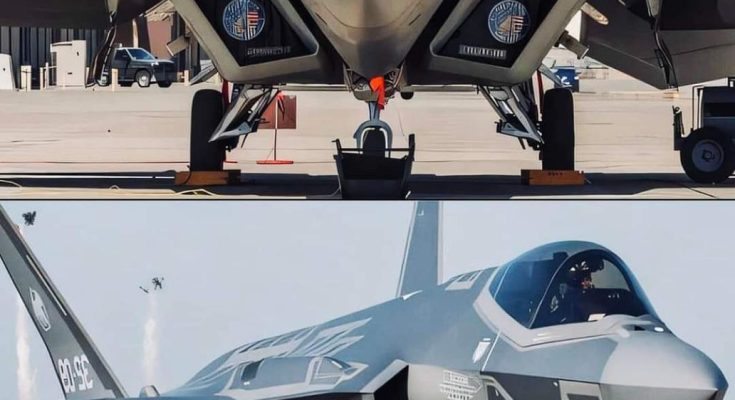The F-22 Raptor and F-35B Lightning II are two of the most advanced fighter aircraft in the world, representing cutting-edge technology and design in air combat capabilities. Both are products of the United States’ military innovation, but they serve different roles and embody different approaches to stealth and agility in modern warfare.
F-22 Raptor
Developed by Lockheed Martin, the F-22 Raptor is primarily an air superiority fighter designed to maintain U.S. dominance in the skies. Its first flight occurred in 1997, with the aircraft entering service in 2005. The F-22 was engineered to be the ultimate fighter, blending stealth, speed, agility, and situational awareness. Its primary role is to gain air superiority by defeating enemy aircraft, with secondary roles including ground attack, intelligence gathering, and electronic warfare.
One of the most important features of the F-22 is its stealth technology, which allows it to operate in contested airspaces without being easily detected by radar. The aircraft’s design incorporates advanced radar-absorbing materials and its shape is carefully optimized for reducing radar cross-section, making it nearly invisible to enemy radar systems. This makes the F-22 highly effective in penetrating hostile air defenses.
Additionally, the F-22 is powered by two Pratt & Whitney F119-PW-100 engines, providing the jet with supercruise capability, which means it can fly at supersonic speeds without the need for afterburners. This gives it a significant edge in terms of both endurance and surprise during air engagements. Coupled with the aircraft’s high maneuverability, the F-22 is known for its ability to change direction quickly and outmaneuver adversaries, making it a formidable opponent in dogfights.
The F-22 is equipped with advanced avionics, including the AN/APG-77 radar, a cutting-edge radar system that can detect and track enemy aircraft at long ranges. The Raptor also boasts superior situational awareness, with cockpit displays and sensors that provide the pilot with a complete picture of the battlefield.
Despite its capabilities, the F-22 has been limited in production due to its high costs, with only 187 units built, and it is primarily used by the U.S. Air Force.
F-35B Lightning II
The F-35B Lightning II is another revolutionary aircraft developed by Lockheed Martin, but it is designed for a different purpose. As part of the Joint Strike Fighter (JSF) program, the F-35 family includes multiple variants, with the F-35B being the version designed for short takeoff and vertical landing (STOVL) capabilities. It is primarily used by the U.S. Marine Corps, the Royal Navy, and several other international forces.
The F-35B’s design features a rotating engine nozzle, allowing it to take off and land vertically or on short runways. This capability makes it invaluable for operations from aircraft carriers, amphibious assault ships, and forward-deployed bases that lack traditional runways. The aircraft can operate in confined environments, giving it an advantage in scenarios where conventional fighters would struggle.
In terms of stealth, the F-35B shares many of the same characteristics as the F-22, with radar-absorbing materials and a low-profile design to minimize its radar cross-section. Its AN/APG-81 radar is a highly capable system that offers advanced targeting and surveillance capabilities. The aircraft also has cutting-edge sensor fusion, combining data from multiple sources to give the pilot a comprehensive, real-time picture of the operational environment.
The F-35B’s advanced avionics and electronic warfare capabilities are integral to its ability to operate in contested airspaces and engage a wide range of targets, from enemy aircraft to ground-based threats. The aircraft’s advanced cockpit display and sensor suite allow pilots to make faster, more informed decisions in high-pressure environments.
While the F-22 is often regarded as the pinnacle of air dominance, the F-35B excels in its ability to provide multi-role capabilities, from close air support to strike missions and intelligence gathering. Its ability to operate in a wide range of environments gives it flexibility that the F-22, with its focus on air superiority, doesn’t provide.
Conclusion
In summary, the F-22 Raptor and F-35B Lightning II are both highly advanced and versatile aircraft, but they are designed for different missions and have distinct capabilities. The F-22 is unmatched in air-to-air combat, with its speed, stealth, and maneuverability making it a peerless opponent in the skies. On the other hand, the F-35B’s flexibility, STOVL capabilities, and advanced avionics make it a force multiplier in modern military operations, capable of executing a variety of roles in a wide range of environments. Together, these two aircraft represent the pinnacle of U.S. airpower and showcase the future of modern warfare.



